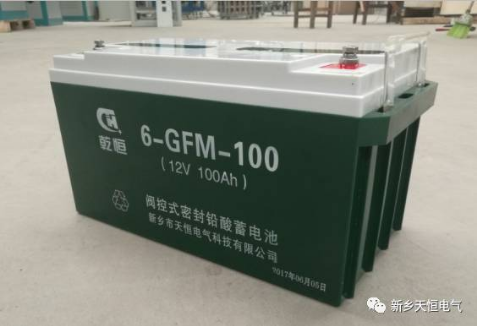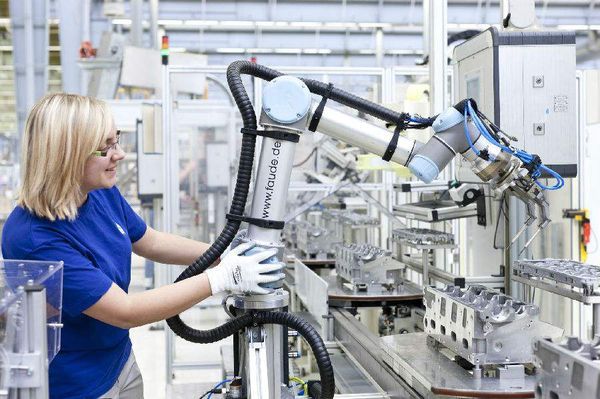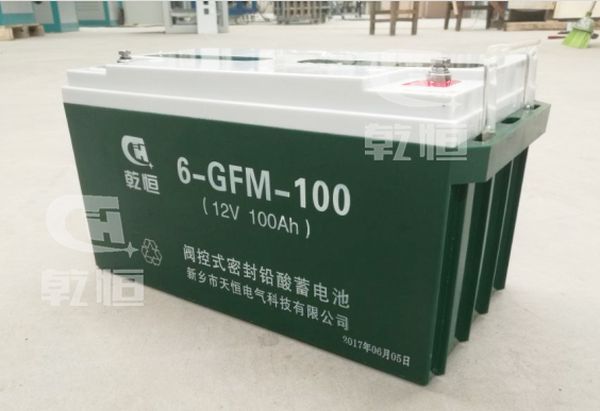Analysis and research on DC panel technology in substation
The DC panel is an important component of the normal operation of the substation. It can continuously transmit stable DC power to the substation and meet the power demand of the operation of power equipment. From the actual application situation, the performance of the substation battery DC panel in terms of service life and power supply is difficult to meet the standard requirements, which restricts the performance of the DC power supply operating system. The study found that the use of supercapacitor DC panel can effectively solve the problem of DC power supply. The improved supercapacitor DC panel has greatly improved in performance, life, stability and other aspects, and has obvious advantages over the battery DC panel. The DC power supply operating system is referred to as "DC panel". It provides stable DC power to various power equipment in the substation and is also the core power supply for modern substations. DC panel technology not only protects the normal operation of the power system, but also plays a good protective role in the stable operation of other components. An in-depth analysis of the problems existing in the DC panel of the substation can ensure the continuous supply of DC power and create favorable conditions for the normal operation of power equipment and related modules. The active introduction of DC panel technology in the power industry can accelerate the development of automation and intelligence of substations and improve the overall efficiency of substation equipment operation. 1. Problems with DC panels in current substations The DC panels used in domestic substations are composed of charging cabinets, charging modules, monitoring modules, battery packs, step-down silicon chains and other structures. Each module plays an important role in the DC power supply. From the perspective of industry development trends, DC panels are DC systems operating under digital control mode, which have multiple functions such as control, protection, management and monitoring for DC power supply in substations. At present, DC panel technology used in substations has remote monitoring, control and other functions, which facilitates the on-duty personnel to control the operation of the power system. However, some problems with DC panels should also attract the attention of technicians. Cadmium nickel batteries and sealed lead-acid batteries are commonly used DC panels. The main problems are as follows: (I) Cadmium nickel battery DC panel 1. Performance problems. Substations need to use a large number of battery modules to output electrical energy through the DC bus to maintain normal DC power control. For example, in general, a large substation DC bus outputs 220V, which requires about 200 battery combination modules. However, during the production and processing of cadmium nickel batteries, the manufacturer cannot guarantee that the charging and discharging performance of each battery is completely consistent, and the combination of 200 batteries will produce obvious differences in characteristics. The charging power supply connected to the cadmium nickel battery DC screen after the DC power supply is supplied is consistent, and the load discharge object is the same. This feature leads to the weakening of the performance of local cadmium nickel batteries and reduces the function of the entire battery combination module. 2. Life problem. Due to the defects of the cadmium nickel battery combination material, the DC screen is essentially in a "floating charge state" during operation. At this time, the service life of the cadmium nickel battery DC screen depends on the charger. According to the provisions of the industry standard, the manufacturer guarantees the life of cadmium nickel batteries for more than 10 years, but the specific use records are only about 5 years. The reason for the shortened life of the battery DC screen is that the excessive subduction current will cause the water in the electrolyte to be electrolyzed into hydrogen and oxygen, which is the fundamental cause of the battery explosion. If the cadmium nickel battery DC screen is not specially treated, it is easy to cause accidents. Therefore, the service life of the DC screen will be affected by other factors. 3. Oxidation problem. During the use of the cadmium nickel battery DC screen of the substation, redox reactions will also occur, causing the cadmium nickel material to undergo a chemical reaction to generate cadmium oxide, resulting in a continuous decrease in the effective area of the plate. In order to avoid the occurrence of redox reactions, substation staff will regularly conduct "activation tests" on the batteries for analysis. In the activation test, the battery needs to be charged and discharged. The operation at this stage will cause polarity reversal and cause the battery to be scrapped. In addition, while the redox reaction destroys the performance of the cadmium nickel DC screen, it will also bury safety hazards for the stable operation of the substation. For example, if the battery is completely installed in the cabinet, it is easy to cause safety accidents such as burning and explosion. (II) Sealed lead-acid battery DC screen Driven by science and technology, domestic substation DC screen technology continues to develop, and many new battery products have also been widely used in substations. Based on the shortcomings of the cadmium nickel battery DC screen, companies began to use sealed lead-acid batteries, referred to as "valve-controlled batteries." This product is superior to nickel-cadmium batteries in terms of quality, performance, price, and maintenance. For example, valve-controlled batteries do not require excessive maintenance or water treatment, which provides great convenience for substation operators. However, the "fully sealed" state of the DC panel also causes many problems, especially when the battery is observed and inspected, it is difficult for maintenance personnel to update the device in time. In addition, due to the relatively backward domestic valve-controlled battery technology, the life of the product is not guaranteed when it is used in substations, and the operating conditions for the valve-controlled battery DC panel are very strict, which has caused great difficulties for the normal production of substations. 2. Factors affecting the life of valve-controlled batteriesService life is an important factor restricting the promotion of valve-controlled batteries. Large, medium, and small substations using this power supply device will consider the service life in order to control the operating cost of the substation. According to the analysis of test data, the factors affecting the service life of valve-controlled batteries are concentrated on temperature factors, discharge factors, water loss factors, corrosion factors, and so on. (I) Temperature FactorsAlthough there are still obvious shortcomings in the use of valve-regulated batteries in substations, they have been greatly improved compared with nickel-cadmium batteries, creating better conditions for the operation of the DC power supply operating system of substations. The life of valve-regulated batteries is very sensitive to temperature. Manufacturers require that the operating environment temperature of the battery be 15℃~25℃. When the ambient temperature exceeds 25℃, the battery life will be shortened by half for every 10℃ increase. (II) Discharge FactorsOver-discharge of batteries is another important factor affecting the service life of batteries. When the battery is over-discharged to zero output voltage, a large amount of lead sulfate inside the battery will be absorbed to the cathode surface of the battery, forming sulfation of the battery cathode. The more sulfate formed on the cathode plate, the greater the internal resistance of the battery, and the service life of the valve-regulated battery will be greatly shortened. (III) Corrosion FactorsGrid corrosion is an important reason affecting the service life of batteries. In the open circuit state, the lead alloy is in direct contact with the active lead dioxide, and they are immersed in sulfuric acid solution together. In the overcharged state, water is consumed in the positive electrode due to the oxygen evolution reaction, and H increases, which leads to an increase in acidity near the positive electrode. The battery grid will become thinner, the capacity will decrease, and the service life will be shortened. (IV) Floating charge factor Most of the batteries used in substations are in a long-term floating charge state, which will cause the anode plate of the battery to passivate, the internal resistance of the battery to increase sharply, and the actual capacity (Ah) of the battery to be far lower than its standard capacity, thereby greatly shortening the actual backup power supply time that the battery can provide and reducing its service life. (V) Water loss factor Battery water loss is also one of the factors that affect its service life. Battery water loss will lead to an increase in the specific gravity of the electrolyte, corrosion of the battery grid, and a reduction in the active substances of the battery, thereby reducing the capacity of the battery and shortening its service life. When the water loss is 5.5%, the capacity drops to 75%; when the water loss reaches 25%, the capacity basically disappears. III. Tests on supercapacitors for DC panelsIn order to prove the advantages of supercapacitors in DC panels of substations, several common test cases are listed, and the comprehensive performance characteristics of supercapacitor DC panel technology are analyzed based on the test results. (I) Test on closing circuit breaker with supercapacitorThe nominal capacity of supercapacitor is 0.82F, and the withstand voltage is 280V. Test on closing circuit breaker with supercapacitor. Test method: disconnect the closing power supply of 615 cabinet; connect the two outlet terminals of the charged supercapacitor to the contact of the closing contactor; simulate the normal closing mode, press the closing button, and record the number of closings and the voltage at the capacitor terminal. A total of 15 closings were made, and each time the closing was successful. Result: When the capacitor is charged to 10% of the rated voltage 95, the CD-Ⅱ electromagnetic mechanism can be reliably closed for more than 8 times, and each closing causes the capacitor terminal voltage to drop by 5V. (II) Supercapacitor charging time testThe initial charging of the supercapacitor is equivalent to a short circuit if no current limiting resistor is added. The manufacturer recommends using a 1000W iodine tungsten lamp as a current limiting resistor. Its cold resistance is nearly 10 times smaller than the hot resistance, which meets the requirement that the current limiting resistor should be reduced after the capacitor voltage rises. The following test data are all measured data with a 1000W iodine tungsten lamp in series. Results: Different charging power supplies have an impact on the charging speed, but no matter what power supply, it only takes 3 minutes for the capacitor to charge from zero volts to the rated voltage. After that, the long-term floating charge current changes from 0 to 10mA. (III) Supercapacitor self-discharge test After the supercapacitor is charged to 242V, it is completely disconnected from the load and the capacitor terminal voltage is measured at the same time every other day. Results: The terminal voltage drop speed is related to whether it has been floated. Without float charging, it reaches 2 to 3V/h in the first few hours, that is, it drops 2 to 3V per hour. After half an hour of float charging, the self-discharge speed slows down significantly, which may be related to the fact that the charge inside the capacitor has not had time to be evenly distributed. In normal use, the supercapacitor is in a long-term floating charge state, and the effective voltage can be maintained for 3 days (72 hours) after the load is completely disconnected. 4. Performance comparison between supercapacitor DC panel and battery DC panelAccording to the test results of supercapacitors used in DC panels, it not only gets rid of the shortcomings of traditional battery DC panels, but also significantly improves the efficiency of substation power system operation, and provides sufficient DC power for operators' system control and transformation. In order to verify the many advantages of supercapacitor DC panels, this article focuses on performance and makes a comprehensive comparison between supercapacitor DC panels and battery DC panels in terms of failure, life, maintenance, etc. (I) Comparison of failuresNo matter which type of battery is used in the substation, it needs to be equipped with a corresponding discharge device when in use. This is an important condition to ensure that the battery continuously supplies DC power. Judging from the test results, the failure rate of the discharge device used in the traditional battery DC panel is significantly higher than that of the supercapacitor DC panel, which is not conducive to the stable operation of the daily operation of the substation. The supercapacitor discharge device is simpler in structure, and it is more convenient to modify or discharge it. (II) Comparison in life spanAfter the battery is used up, it needs to be charged before it can be used normally. Long-term charging will shorten the service life of the battery, which is generally shorter than the standard service life of 5 to 10 years, which will affect the stable performance of the battery DC screen. The service life of the supercapacitor DC screen is longer because it does not have the problem of overcharging and over-discharging. During the production period, the maximum charging voltage can meet the maintenance needs, which effectively avoids the shortening of the service life of the supercapacitor. (III) Comparison in maintenanceFrom the perspective of DC screen maintenance, the daily maintenance workload of the substation is large. Not only must the battery be regularly tested and updated, but the line connection inside the battery must also be comprehensively monitored, which poses great difficulties to the staff. However, the supercapacitor DC screen does not require excessive maintenance when used in the substation. After the DC screen device is fully tested and meets the standards at the initial installation, it can be used for a long time. In terms of performance recovery, the battery needs to recover for several hours after discharge before it can supply power normally, while the supercapacitor can restore power in only 3 to 5 minutes. Maintain the normal power supply of the substation. V. ConclusionThe DC power supply operating system is the basic guarantee for the normal operation of the substation. It can timely transmit current to various power equipment for supply and use. With the accelerated pace of social modernization, my country's substation construction is facing new reforms and optimizations. Various battery DC screens are gradually replaced by other forms of devices, which is of great help to the future innovation and development of substations. Supercapacitor DC screen is an advanced technology for substation DC screens. It is significantly superior to traditional battery DC screens in terms of performance, maintenance, life, and failure. It should be fully promoted and used in the power industry. Xinxiang Tianheng Electric has a complete R&D technical team and an experienced after-sales team. If you have any questions during use, you can directly call us. Your satisfaction is our greatest mission!








